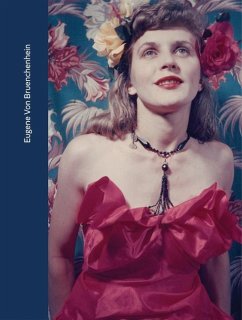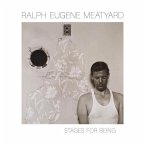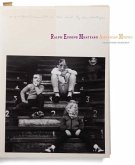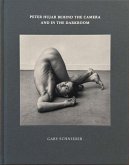"Von Bruenchenhein belongs among the great American outsider artists." -Roberta Smith, The New York Times King of Lesser Lands traces the fugitive career of Eugene Von Bruenchenhein (1910-83), a prolific creator of a diverse range of distinctive images and sculptural objects, who produced his art in private over a period of about 50 years at his home in Milwaukee, Wisconsin. His large and unusual body of work was not discovered until after he died. In 1939, at the age of 29, Von Bruenchenhein met Evelyn Kalka. She became his wife and muse. Evelyn, who was nicknamed "Marie," served as his model and the subject of thousands of erotic photo-portraits, which he shot and printed himself. For these images, which emulated girlie-magazine pinups with an offbeat air, Von Bruenchenhein designed and created his own background sets and costumes for Marie. Around the mid-1950s, the artist began to make abstract paintings using his fingers or sticks, combs, leaves and other makeshift utensils to push oil paint around the surfaces of Masonite boards or cardboard taken from packing boxes at the bakery where he worked. Von Bruenchenhein's abstract explosions of vibrant color evoke the forms of strange plants or fantasy creatures and architectural structures. Later, Von Bruenchenhein used clay to produce home-fired crowns and vases, and also created mysterious sculptures resembling towers or thrones with chicken and turkey bones. During his lifetime, only his closest family members and friends knew anything about his artistic pursuits. In 1983, after the artist's death, one of his friends called the attention of the Milwaukee Art Museum to Von Bruenchenhein's extraordinary oeuvre. On the occasion of a 2010 survey of his work at the American Folk Art Museum in New York, Roberta Smith wrote in The New York Times: "Von Bruenchenhein belongs among the great American outsider artists whose work came to light or resurfaced in the last three decades of the 20th century." Smith placed Von Bruenchenhein's unusual art in the company of that of Henry Darger, Martin Ramírez, Bill Traylor, James Castle and Morton Bartlett.
Hinweis: Dieser Artikel kann nur an eine deutsche Lieferadresse ausgeliefert werden.
Hinweis: Dieser Artikel kann nur an eine deutsche Lieferadresse ausgeliefert werden.








